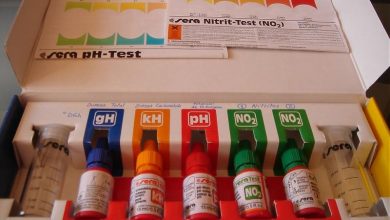Cycle of nitrogen

What is the nitrogen cycle?
The nitrogen cycle is a process that occurs in nature. This cycle includes the biological processes of plants, animals and microorganisms, as well as the abiotic processes of light and pH, by which this nitrogen is supplied to living beings.
This process occurs in the terrestrial environment and also in the aquatic one. For the aquarium balance to be maintained, we must know how the nitrogen cycle occurs within the aquarium, and how it can affect each of the living beings that contain it.
The nitrogen cycle within the aquarium
Nitrogen, as a chemical element, is part of the tissues of animals and plants , and is obviously present in the organic substances that are released from them : fish carcasses, urine, excrement and plant remains.
These organic materials are transformed into ammonia (NH3), a highly toxic compound, and into ammonium (NH4 +) , one hundred times less toxic.
In the presence of oxygen, aerobic bacteria transform ammonia and ammonium into nitrites (NO2) , dangerous for fish, and into nitrates (NO3), which are considerably less toxic.
This process of changes is known as nitrification.
We can positively influence this process, so that it is the most beneficial for the aquarium and the fish.
One way to promote the development of aerobic bacteria is to install a porous substrate , through which water can easily circulate and provide oxygen to the bacteria.
If the amount of oxygen is low, the aerobic bacteria will be replaced by another type of bacteria, the anaerobic, which reduce nitrates to nitrites, increasing the accumulation of ammonia compounds, harmful to the living beings in the aquarium.
Another way to promote the nitrogen cycle is the frequent and regular change of the aquarium water.
In any case, the worst is the concentration of nitrites, which in no case should exceed 0.21 milligrams per liter.
One of the reasons why you must wait at least two weeks to introduce fish into the aquarium is that it is necessary for bacterial colonies to appear to facilitate the nitrogen process.
The Oxigen
Inside the aquarium there are or must exist, different dissolved gases, among which is oxygen.
The amount of oxygen present in the aquarium water is important, both for fish and aquarium plants, and of course for the proliferation of aerobic bacteria.
In nature, the renewal of oxygen in the water is carried out through the surface, and the superficial agitation of the water.
However, in an aquarium, the contact surface of the water with the air is very small , so air pumps must be used.
Carbon dioxide
Carbon dioxide is a gas that comes from the respiration of living beings, and therefore emitted by fish.
The aquarium plants , thanks to chlorophyll, are able to absorb carbon dioxide.
This phenomenon only occurs during the day with light, and stops at night. It is important that concentrations of between 5 and 15 milligrams per liter are not exceeded, as higher concentrations are harmful to fish.
Nitrification in a marine aquarium
In a marine aquarium , fish should not be introduced until at least two months have passed , the minimum time necessary for the nitrifying bacteria to be fully active.
There are formulas to speed up and improve the nitrogen cycle in a marine aquarium.
One of the formulas is to transfer a block of coral from another already established marine aquarium, the other would be to take part of the substrate from an aquarium that has been running for a few months without problems.
If we are in a hurry to have marine fish in our aquarium, we can start by introducing fish that are tolerant to a temporary elevation of nitrites, such as chromis .
Test and Kits to measure water quality
In the market we will find all kinds of aquarium water quality tests and meters .
Some are specific, to measure the alkalinity of the water (pH), the calcareous hardness (KH), its hardness (dH), levels of nitrites (NO2), nitrates (NO3) and ammonia (NH3).
In addition to the tests aimed at measuring each of the parameters, there are another series of Analysis Kits that serve to measure all the parameters.
Its effectiveness varies from one model to another, the strip ones being the simplest, but least reliable.
Tips to improve nitrification in the aquarium
To improve the nitrogen cycle and nitrification in the aquarium , we can take some easy-to-implement measures:
- Feed the fish whatever food they are capable of consuming within a few minutes , so that food debris is minimized, which can then decompose.
- Quickly remove food scraps and organic residues from the bottom.
- Monitor the operation of the filters, adapting them to the number or type of fish in the aquarium.
- Provide supports for the development of bacteria.
- Renew part of the aquarium water every week.
- Monitor the good growth of the aquarium plants.
- Perform periodic measurements of the concentrations of ammonia, nitrites, nitrates and pH.





